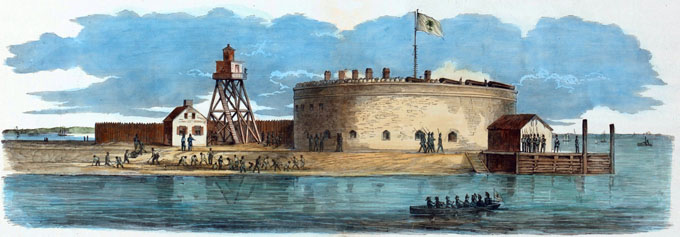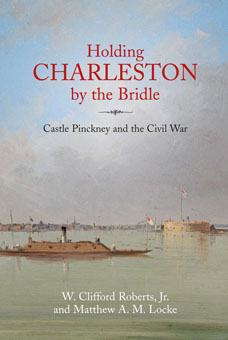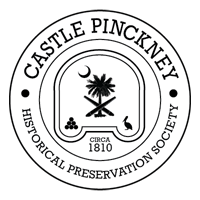Castle Pinckney’s Fascinating History
Castle Pinckney has a fascinating history. Practically anything worthwhile that focuses on the history of the fort and archaeology at the site — including articles and books — will be posted in this section, History and Archaeology.
The latest works on Castle Pinckney, including the best articles and books, will be posted on this page. Everything will be posted in this section’s Archives.
MUST-READ
Holding CHARLESTON by the Bridle
Currently highlighted in this section is the first book on Castle Pinckney, Holding CHARLESTON by the Bridle: Castle Pinckney and the Civil War (published in 2024).
The book’s co-authors, W. Clifford Roberts, Jr. and Matthew A.M. Locke, rely on extensive primary research and archaeological evidence to tell Castle Pinckney’s full story. They also explain everything from the fort’s innovative design as part of America’s “Second System” of coastal fortifications to the modern challenges of preserving its weathered brick walls against rising sea levels.
So, this book is a must-read. More

A GREAT PLACE TO START
“Castle Pinckney: Silent Sentinel in
Charleston Harbor”
The article, “Castle Pinckney: Silent Sentinel in Charleston Harbor,” is highlighted on this page because Castle Pinckney is often mistaken for Fort Sumter. So, this is a great place to start if you want a quick introduction to the fort’s history.
Suzannah Smith Miles of The Post & Courier, Moultrie News wrote this article in 2012 and updated it in 2020. Miles describes the Castle Pinckney site as the “other” island in Charleston harbor, the one closest to peninsula Charleston and easily seen from the Battery, that is often mistaken by visitors for Fort Sumter. She then describes the fort’s long and impressive history. More

What’s Historic about
Castle Pinckney?
Fourteen Facts …
1). Castle Pinckney was constructed as a state-of-the-art seacoast fortress on the eve of the War of 1812.
2). The masonry fort, with its innovative horseshoe design, was part of the nation’s “second system” of coastal fortifications.
3). The structure was built on Shute’s Folly, a marshy island in the center of Charleston Harbor, and designed to protect Charleston from a naval attack.
4). Castle Pinckney’s strategic location allowed the fort to command Charleston and the busy wharves along East Bay Street facing the Cooper River. This made the fort an important chess piece in the secession turmoil of 1832 and 1850, and in the months leading up to the bombardment of Fort Sumter on Apr. 12, 1861.
5). Famous leaders — including President James Monroe and Generals Winfield Scott, Robert E. Lee and P.G.T. Beauregard — inspected its casemates and barracks.
More
